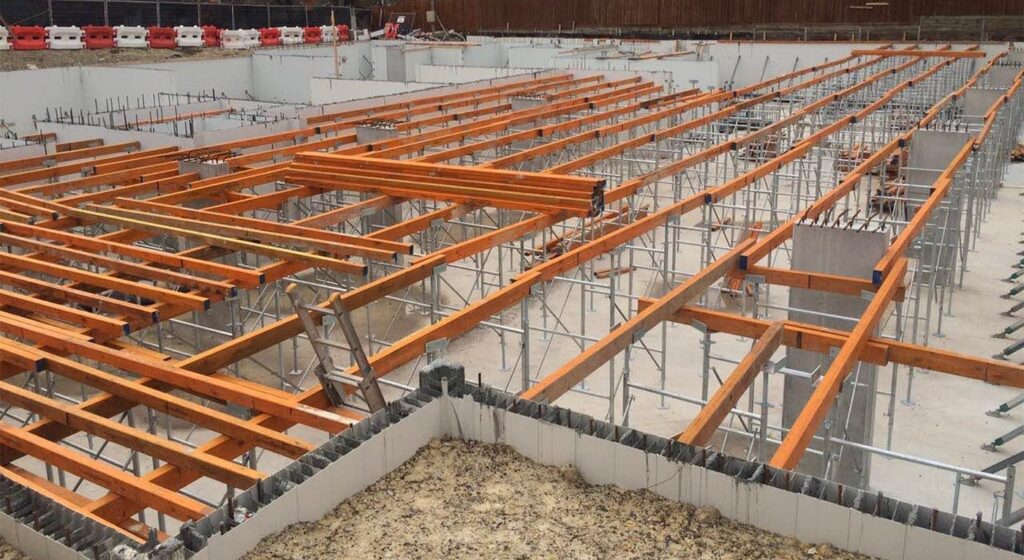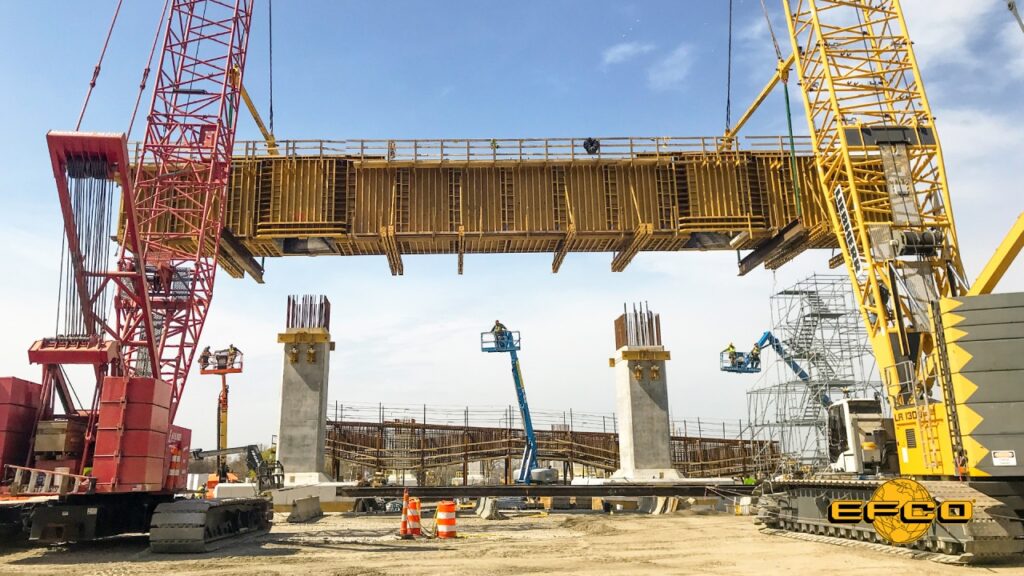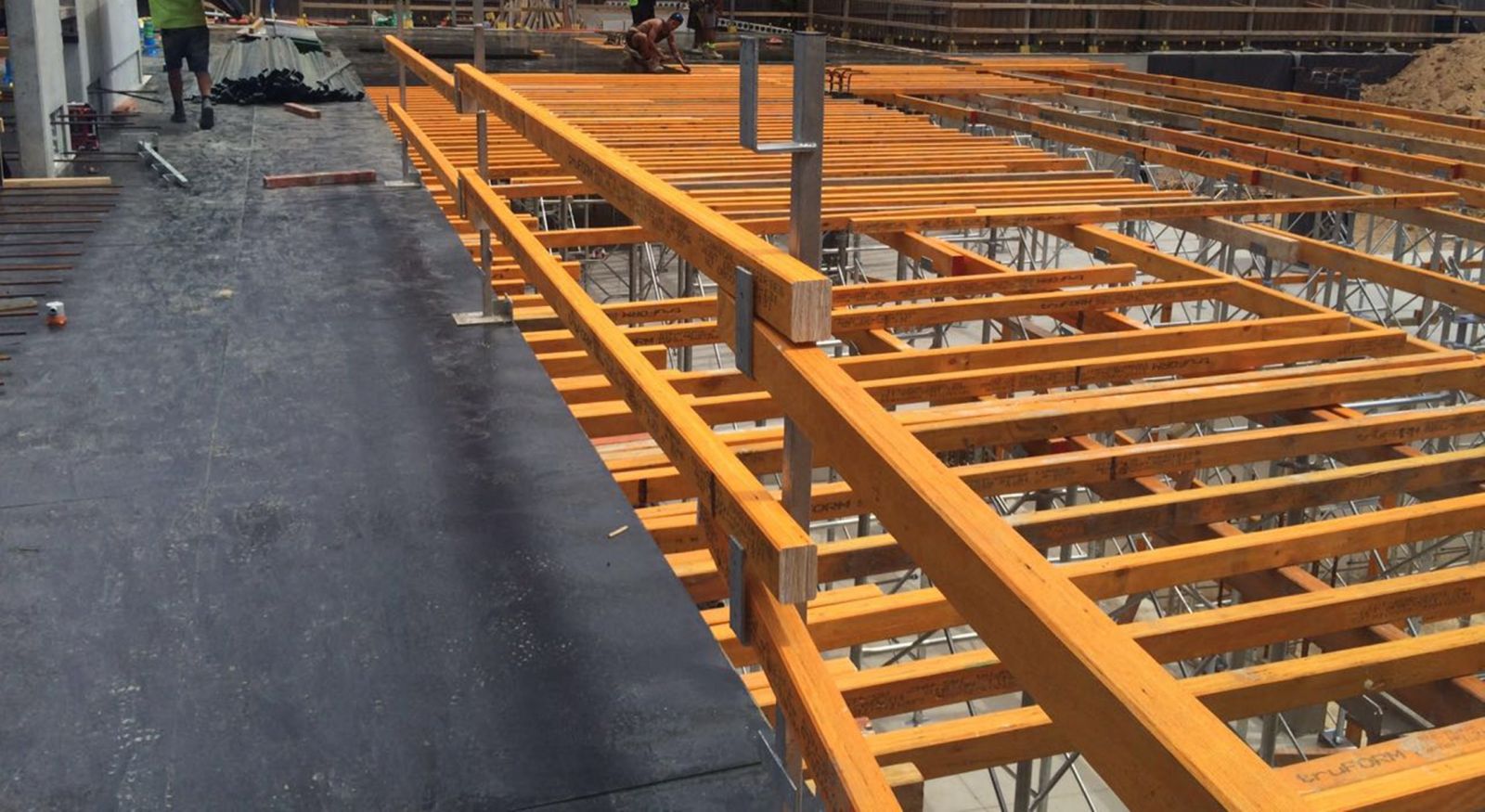Laminated Veneer Lumber (LVL) formwork has become a crucial component in modern construction, revolutionizing the way structures are built. This article delves into the latest innovations in LVL formwork, examining the advancements in technology and their impact on the construction industry. By understanding these innovations, we can gain insights into the future of LVL formwork and its potential in sustainable construction.
Understanding LVL Formwork: A Brief Overview
Laminated Veneer Lumber (LVL) is a type of engineered wood that is widely used in formwork applications. It is made by bonding together layers of veneer with an adhesive, creating a strong and durable material. LVL formwork offers numerous advantages over traditional formwork systems, including increased strength, flexibility, and efficiency.
Let’s explore the basic components of LVL formwork and its crucial role in the construction industry.
The Basic Components of LVL Formwork
LVL formwork consists of several key components that work together to support concrete during the construction process. These components include LVL beams, panels, walings, and props.
LVL beams are horizontal members that provide primary support for the formwork. They are often placed at regular intervals to distribute the load evenly. LVL panels, on the other hand, are used to create the vertical surfaces of the formwork. They are lightweight and can be easily assembled and disassembled, making them ideal for various construction projects.
Walings are horizontal members that connect the LVL beams, providing additional support and stability to the formwork system. Props, also known as shore props or acrow props, are adjustable vertical members that help support the weight of the formwork and distribute the loads.

The Role of LVL Formwork in Construction
LVL formwork plays a crucial role in the construction process. It provides a temporary structure that supports the weight of the concrete and helps shape it to the desired form. By using LVL formwork, construction teams can achieve accurate and consistent results, ensuring the structural integrity of the building. The versatility of LVL formwork allows it to be used in a wide range of applications, from residential buildings to large-scale commercial projects.
One of the key advantages of LVL formwork is its ability to withstand heavy loads. The laminated veneer lumber used in the construction of formwork has high strength and stiffness, making it capable of supporting the weight of concrete and other construction materials. This strength allows for the creation of larger and more complex structures, as LVL formwork can handle the increased loads without compromising safety or stability.
Another benefit of LVL formwork is its flexibility. The modular nature of LVL components allows for easy customization and adaptation to different construction projects. LVL beams and panels can be cut to size on-site, making it possible to create formwork systems that perfectly fit the requirements of each specific project. This flexibility not only saves time and money but also ensures that the formwork is tailored to the unique needs of the construction site.
Furthermore, LVL formwork offers increased efficiency in the construction process. The lightweight nature of LVL components makes them easy to handle and transport, reducing labor and logistics costs. Additionally, the quick assembly and disassembly of LVL formwork systems enable faster construction cycles, allowing for shorter project timelines. This efficiency is particularly advantageous in projects with tight schedules or when multiple formwork systems need to be used simultaneously.
The Evolution of LVL Formwork Technology
Over the years, LVL formwork technology has witnessed significant advancements, evolving from traditional techniques to more modern and efficient methods. Understanding this evolution is essential to appreciate the latest innovations in LVL formwork.
Traditional LVL Formwork Techniques
In the past, LVL formwork was primarily assembled on-site using conventional methods. Workers would manually cut and shape the LVL beams and panels to fit the desired form. While this method was effective, it required significant time and effort.
Despite the labor-intensive nature of traditional techniques, they laid the foundation for the development of more efficient and sophisticated LVL formwork systems.
Modern Advances in LVL Formwork
The advent of modern technology has led to significant improvements in LVL formwork systems. Today, advanced manufacturing processes allow for the precise production of pre-cut LVL components, reducing on-site labor and assembly time.
Additionally, the integration of computer-aided design (CAD) software has revolutionized the way LVL formwork is designed. With CAD, engineers can create intricate formwork designs, optimizing the use of materials and enhancing overall efficiency. Find more about efficiency on https://conceptually.org/concepts/efficiency
Furthermore, the introduction of hydraulic and mechanical systems has made formwork assembly and dismantling faster and safer. These systems enable workers to adjust the formwork easily, ensuring precise alignment and facilitating the construction process.
Moreover, the evolution of LVL formwork technology has also brought about advancements in sustainability. With a growing focus on eco-friendly construction practices, manufacturers have developed LVL formwork systems that utilize sustainable materials and minimize waste.
For instance, some LVL formwork systems now incorporate recycled materials, such as reclaimed wood or recycled plastic, reducing the environmental impact of construction projects. Additionally, the use of modular formwork systems allows for easy disassembly and reusability, promoting a more sustainable approach to construction.
Furthermore, the latest LVL formwork systems are designed to withstand extreme weather conditions, ensuring durability and longevity. This is particularly important in regions prone to hurricanes, earthquakes, or heavy snowfall, where formwork needs to be robust and reliable.
In conclusion, the evolution of LVL formwork technology has not only improved efficiency and safety but has also contributed to sustainable construction practices. With ongoing research and development, we can expect further advancements in LVL formwork systems, making construction processes even more streamlined and environmentally friendly.
The Latest Innovations in LVL Formwork
The continuous advancements in technology have paved the way for remarkable innovations in LVL formwork. These innovations focus on improving material technology, enhancing design efficiency, and embracing sustainable construction practices.
One of the key areas of focus in the latest innovations in LVL formwork is the development of advanced surface treatments. These treatments not only enhance the aesthetics of the formwork but also improve its resistance to wear and tear, extending the lifespan of the formwork and reducing maintenance costs over time.
Improvements in Material Technology
New materials and manufacturing techniques have been developed to enhance the strength, durability, and sustainability of LVL formwork. For example, researchers have explored the use of high-performance adhesives that improve the bonding strength between veneer layers, resulting in more robust LVL formwork. Additionally, the incorporation of eco-friendly materials in LVL production contributes to sustainable construction practices.
In addition to adhesive advancements, researchers have also been experimenting with the integration of nanotechnology in LVL formwork production. By incorporating nanoparticles into the material composition, LVL formwork gains enhanced mechanical properties, such as increased strength and flexibility, opening up new possibilities for complex construction projects.
Learn more at: LVL Timber A Game Changer for Modern Building Projects
Advancements in Design and Efficiency
Design innovations have played a pivotal role in making LVL formwork more efficient and cost-effective. The use of advanced software allows for the optimization of formwork designs, reducing material waste and ensuring precise formwork alignment.
Moreover, the introduction of modular formwork systems has significantly enhanced construction efficiency. These systems allow for easy assembly and disassembly, enabling faster construction cycles and reducing labor costs.
Furthermore, the integration of IoT (Internet of Things) technology in LVL formwork has revolutionized the construction industry. IoT-enabled formwork systems can provide real-time data on the condition and performance of the formwork, allowing for proactive maintenance and optimizing construction schedules.
The Impact of Innovations on the Construction Industry
The latest innovations in LVL formwork have had a profound impact on the construction industry, particularly in two key areas: enhancing construction safety and influencing economic implications.
Enhancing Construction Safety with New LVL Formwork
Safety is a paramount concern in the construction industry, and LVL formwork innovations have significantly contributed to reducing construction-related accidents. The development of safer and more efficient formwork systems, such as hydraulic and mechanical systems, enables construction teams to work with increased precision while minimizing risks.
Moreover, the integration of advanced technology like sensors and real-time monitoring in LVL formwork systems has revolutionized safety practices on construction sites. These technological enhancements provide real-time data on load capacities, structural integrity, and potential hazards, allowing for proactive safety measures to be implemented swiftly. To learn more about hazards click here.

The Economic Implications of LVL Formwork Innovations
The advancements in LVL formwork technology have resulted in various economic benefits for the construction industry. Improved design efficiency and faster construction cycles lead to reduced labor costs and shorter project timelines. Additionally, the utilization of eco-friendly materials promotes sustainability and aligns with the growing demand for environmentally conscious construction practices.
Furthermore, the adoption of LVL formwork innovations has opened up new opportunities for cost-effective modular construction techniques. By prefabricating components off-site using advanced formwork systems, construction companies can streamline processes, minimize material waste, and achieve significant cost savings. This shift towards modular construction also enhances project scalability and flexibility, allowing for more efficient resource allocation and improved overall project management.
The Future of LVL Formwork
Looking ahead, the future of LVL formwork is promising, driven by evolving construction demands and the rising focus on sustainable building practices. Understanding the predicted trends in LVL formwork technology and exploring its potential in sustainable construction is crucial for industry professionals.
Predicted Trends in LVL Formwork Technology
Experts predict that LVL formwork technology will continue to evolve, with a focus on further enhancing design efficiency and optimizing material usage. The integration of robotic automation and 3D printing in formwork production is expected to streamline manufacturing processes and reduce costs.
Robotic automation has the potential to revolutionize the formwork industry by automating repetitive tasks and increasing precision. This technology can significantly reduce human error and improve overall productivity. Additionally, 3D printing offers the opportunity to create complex and customized formwork designs with ease, allowing for greater flexibility and creativity in construction projects.
The Potential of LVL Formwork in Sustainable Construction
LVL formwork has immense potential in sustainable construction. Its eco-friendly materials and design efficiency align with the industry’s growing emphasis on reducing carbon footprint and embracing sustainable practices. As the demand for sustainable buildings continues to rise, LVL formwork is poised to play a significant role in shaping the future of construction.
One of the key advantages of LVL formwork is its ability to be reused multiple times, reducing waste and minimizing the environmental impact of construction projects. Additionally, the use of LVL formwork can contribute to improved energy efficiency in buildings, as it provides excellent insulation properties. This can result in reduced energy consumption and lower greenhouse gas emissions.
Furthermore, LVL formwork can be easily dismantled and recycled at the end of its lifespan, ensuring that the materials are not wasted and can be repurposed for future construction projects. This circular approach to construction aligns with the principles of a circular economy, where resources are used efficiently and waste is minimized.
In conclusion, the latest innovations in LVL formwork have propelled the construction industry into a new era of efficiency, safety, and sustainability. By understanding the evolution of LVL formwork technology and exploring its potential in sustainable construction, we can harness the power of these innovations to create a better-built environment for future generations.

